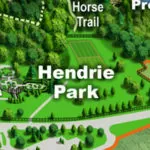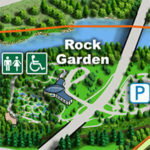| Membership | Price (+HST) |
|---|---|
| Single | $85/year |
| Single Plus | $120/year |
| Family | $130/year |
| Family Plus | $175/year |
| Contributing | $300/year |
| Supporting | $600/year |
| Sustaining | $1,000/year |
| Benefactor's Circle | $2,500/year |
| Director's Circle | $5,000/year |
| President's Circle | $10,000/year |
Cootes Paradise: Rebuilding a River Channel with Christmas Trees
Cootes Paradise: Rebuilding a River Channel with Christmas Trees
By Jennifer Bowman, Senior Ecologist, Aquatic Conservation Programs, Royal Botanical Gardens.
If you’ve driven past Cootes Paradise marsh, or gone on a hike around the area, you may have noticed that the marsh was looking a bit different this year. In the spring and summer, waterlilies bloomed across many areas of the marsh, and we saw more submergent plants growing in the marsh since restoration work began over 30 years ago.
Restoring and recreating the main creek channels within the marsh is a key focus of the marsh recovery plan here at Royal Botanical Gardens. To support this, the aquatic ecology team has adopted a new strategy to rebuild the Spencer Creek channel, near Bull’s point. We are using Christmas trees, placed between wooden posts, to help trace the creek’s mouth and encourage sediment to settle along the banks. This setup allows the creek to deepen and maintain its connection to the lake, supporting fish migration in the spring and fall. This structure also eliminates the need for man-made fencing used to keep geese, swans, and other waterfowl from feeding on newly planted vegetation. In fact, not only is the berm protecting planted vegetation, but it is also creating ideal conditions for seeds already in the marsh to sprout naturally.
The new berms along Spencer Creek have become a popular spot, attracting more than just visitors. Fish, birds, reptiles, insects, turtles, and even mammals are drawn to this new structure, as it provides shelter in an otherwise very open, exposed environment. Herons and egrets can be seen fishing in the sheltered areas among the plants. Common terns rest on posts, watching over the marsh. Water snakes bask on branches, while insects make use of both underwater and above water parts of the structure. Even a mother and baby mink have been spotted using the berm to access new fishing spots.
We are excited to see the continued improvements in the marsh next year and hope our visitors will also enjoy watching the marsh recover. If you would like to be a part of this, you can make a monetary donation to RBG, and if you would like to donate your used Christmas tree after the holiday season, we will incorporate it into our habitat projects.
More from the RBG Blog
Check out RBG’s blog for announcements, articles, and more from Canada’s largest botanical garden.
Want to be sure you hear first? Sign up for our weekly e-newsletter to hear about upcoming events, weekend activities, articles, and more!




















